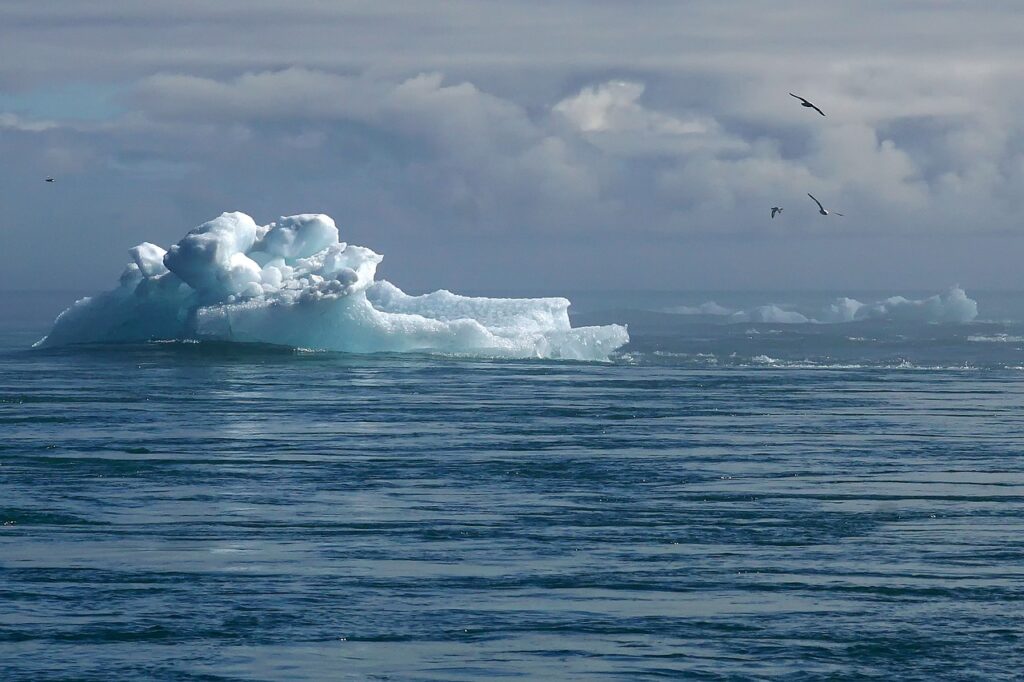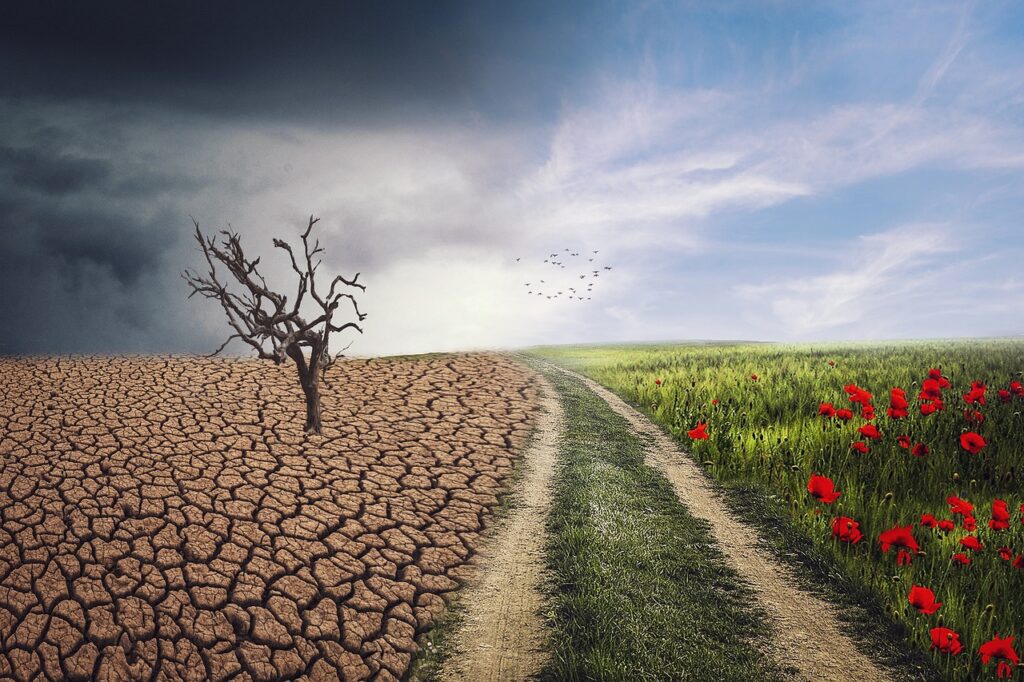
In recent decades, the world has witnessed an unprecedented push toward mitigating climate change. Governments have rolled out policies to reduce carbon emissions, individuals have embraced lifestyle changes like using electric cars, and global initiatives like the Paris Agreement have aimed to limit temperature rise. However, despite these efforts, many scientists argue that these actions will not stop climate change. The reality is that the climate is constantly changing, and human efforts, while well-intentioned, cannot halt these natural processes.

Climate Change is Inevitable
To understand why our efforts cannot stop climate change, it’s essential to recognize that the Earth’s climate has been in flux for billions of years. Ice ages have come and gone, continents have drifted, and ocean currents have shifted—all without any human intervention. These natural cycles are driven by a complex interplay of factors, including solar radiation, volcanic activity, oceanic circulation patterns, and the Earth’s orbit. While human activities like burning hydrocarbons do contribute to greenhouse gas emissions, they are only a tiny part of the much larger natural systems at play.
The belief that human efforts can stop climate change is based on the assumption that human activities are the primary driver of current climate changes. However, many scientists argue that while we do influence the climate to some degree, we are not the dominant force. The Earth’s climate system is incredibly complex and influenced by factors far beyond our control. For instance, variations in solar output, volcanic eruptions, and natural carbon sinks and sources all play significant roles in shaping the climate.

The Limits of Technological Solutions
Electric vehicles, renewable energy sources, and carbon capture technologies are often hailed as solutions that will stop climate change. However, it’s crucial to be aware of their limitations and the environmental costs they entail. Electric cars, for example, still rely on energy from power grids, many of which are powered by hydrocarbon-based energy sources. Moreover, the production of electric vehicles involves significant environmental costs, from mining rare earth metals to manufacturing batteries. Even with the widespread adoption of these technologies, the overall reduction in greenhouse gas emissions may not be enough to counteract the broader, natural forces driving climate change.
Renewable energy sources like wind and solar power are also touted as solutions for a cleaner earth, but they are not without challenges. Their intermittent nature means that they require backup power from hydrocarbon energy or large-scale storage solutions, which are not yet fully developed. Additionally, transitioning to renewable energy would take decades while global carbon emissions continue to rise.
The Inexorable Rise of Sea Levels
One of the most alarming consequences of climate change is the rise in sea levels. Many people believe that reducing carbon emissions can stop the seas from rising. However, this belief is not supported by the evidence. The melting of ice sheets in Greenland and Antarctica, driven by natural warming processes, is already contributing to rising sea levels. Even if humans were the cause of climate change and we were to stop all carbon emissions today, the momentum of these processes means that sea levels will continue to rise for centuries.
The thermal expansion of seawater as it warms is another factor contributing to rising sea levels. This process is slow and inevitable, and it cannot be reversed by human intervention. The reality is that coastal communities must adapt to rising sea levels through strategies like building sea walls, relocating infrastructure, and developing early warning systems for floods.
The Economic and Social Costs of Climate Legislation
Moreover, these policies often grant governments extensive control over various aspects of the economy and individual lives. From regulating energy use to dictating transportation choices, climate legislation can restrict personal freedoms. For instance, the push for electric vehicles may limit consumers’ options and force them into adopting technologies they may not prefer or afford. This level of government intervention can lead to a significant reduction in individual autonomy and market freedoms.

Beyond the physical realities of climate change, the economic and social impacts of climate change legislation are profound. Policies aimed at reducing carbon emissions often come with significant economic costs, leading to higher energy prices, job losses in traditional energy sectors, and increased costs of goods and services. For many industries, particularly those reliant on hydrocarbons, transitioning to a low-carbon economy means restructuring or even shutting down, leading to unemployment and economic instability.

Governments often use climate change to justify increasing control over energy production, land use, and even personal consumption habits. This can lead to a concentration of power in the hands of the state, reducing the ability of individuals and businesses to make independent decisions. While many contend that man-made climate change poses a national security threat, a more significant concern is that climate change policies are enabling government overreach, with enduring consequences for personal freedom and economic prosperity.

Redirecting Our Efforts: Helping Those Affected by Climate Change
Given the complexity of the Earth’s climate system and the scale of the natural processes involved, it is clear that current human efforts cannot stop climate change. This does not mean that these efforts are entirely without merit; they can still play a role in mitigating the impacts of climate change and buying time for adaptation. However, recognizing that we cannot halt the natural forces driving climate change should lead us to a different approach.

Instead of pouring time, effort, and financial resources into attempting to stop an unstoppable process, we should focus on helping those who will be affected by climate change. This means investing in infrastructure that can withstand extreme weather events, developing technologies to manage rising sea levels, and planning for the inevitable changes that will occur. By prioritizing adaptation and resilience, we can better prepare for the future, ensuring that communities are protected and livelihoods are preserved.

This shift in focus also allows us to safeguard economic stability and personal freedoms. Rather than imposing restrictive policies with questionable efficacy, we can use our resources to build a more resilient society capable of thriving in a changing climate. This approach respects the Earth’s natural processes while acknowledging the limits of our influence, ensuring that our efforts are directed where they can truly have the most significant impact.

Conclusion
Climate change is a complex and multifaceted issue driven by both natural and human factors. While reducing our impact on the environment is important, it is equally important to recognize that we cannot stop climate change. The Earth’s climate has always been in flux and will continue to change regardless of human efforts. By accepting this reality and focusing on adaptation, we can better prepare for the challenges ahead without sacrificing economic prosperity or personal freedom. Moreover, we can create a resilient and sustainable future by redirecting our resources to help those most affected by climate change.
Sources:
1. “Climate Change: A Complex Reality,” National Academy of Sciences. Available at: http://www.nasonline.org/about-nas/climate-change/climate-change-QA.html
2. “Why Electric Cars Won’t Save Us from Climate Change,” Scientific American. Available at: https://www.scientificamerican.com/article/why-electric-cars-wont-save-us-from-climate-change/
3. “The Inexorable Rise of Sea Levels,” NASA Earth Observatory. Available at: https://earthobservatory.nasa.gov/features/SeaLevel
4. “The Natural Drivers of Climate Change,” NOAA Climate.gov. Available at: https://www.climate.gov/news-features/understanding-climate/natural-climate-change-climate-variability
5. “Economic Impacts of Climate Change Legislation,” Heritage Foundation. Available at: https://www.heritage.org/environment/report/economic-impacts-climate-change-legislation
Other resources for you to consider when forming your opinion:
“The Unstoppable Climate Phenomenon” – National Aeronautics and Space Administration (NASA)
- Solar radiation and oceanic circulation patterns contribute to long-term climate changes independent of human influence.
- Available at: https://climate.nasa.gov/news/2939/the-unstoppable-climate-phenomenon/
“Economic Consequences of Carbon Taxes and Climate Change Legislation” – American Enterprise Institute (AEI)
- Economic impacts of climate-related policies on energy prices, job markets, and overall economic growth.
- Available at: https://www.aei.org/research-products/report/economic-consequences-of-carbon-taxes-and-climate-change-legislation/
“The Role of Natural Factors in Climate Change” – The Global Warming Policy Foundation (GWPF)
- This research highlights the significant role that natural factors like volcanic activity and solar variations play in climate change, challenging the idea that human activities are the primary drivers.
- Available at: https://www.thegwpf.org/content/uploads/2021/09/RoleofNaturalFactors.pdf
“Why Renewable Energy Cannot Fully Replace Hydrocarbon-Based Energy Sources” – Institute for Energy Research (IER)
- The article examines the limitations of renewable energy technologies, including the challenges related to intermittency, storage, and the current reliance on hydrocarbons to support renewable grids.
- Available at: https://www.instituteforenergyresearch.org/renewable/why-renewable-energy-cannot-fully-replace-hydrocarbon-energy-sources/
“The Impact of Rising Sea Levels on Coastal Communities” – National Oceanic and Atmospheric Administration (NOAA)
- Ongoing and expected impacts of rising sea levels on coastal infrastructure, ecosystems, and human populations.
- Available at: https://www.noaa.gov/education/resource-collections/climate/sea-level-rise
- “Climate Change: Adaptation and Resilience Strategies” – International Institute for Environment and Development (IIED)
- Adaptation and resilience strategies in response to climate change, particularly in vulnerable regions and communities.
- Available at: https://www.iied.org/climate-change-adaptation-resilience-strategies





